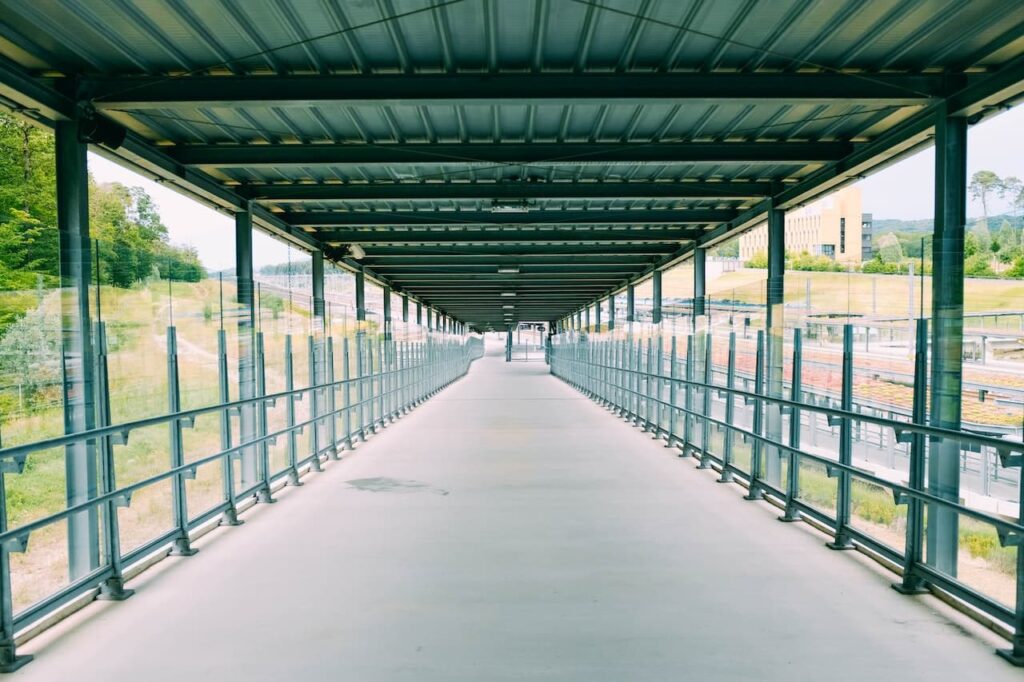Roofing
How long does a metal roof last? Exploring the Lifespan of Metal Roofs
Metal roofs are known for their durability and longevity, but how long do they really last? The answer depends on a number of factors, including the type of metal used, the climate, the quality of installation, and the level of maintenance provided.
Types of metal roofing materials
There are a number of different types of metal roofing materials available, including:
- Aluminum: Aluminum is a lightweight and durable metal that is resistant to corrosion. Aluminum roofs typically last for 40-70 years.
- Copper: Copper is a very expensive metal, but it is also extremely durable and can last for over 100 years. Copper roofs are also resistant to corrosion and fire.
- Galvanized steel: Galvanized steel is a type of steel that has been coated with a zinc layer to protect it from corrosion. Galvanized steel roofs typically last for 20-30 years.
- Standing seam metal: Standing seam metal roofs are a type of metal roof that uses interlocking panels to create a watertight seal. Standing seam metal roofs typically last for 50-70 years.
Other metal roofing materials that are less popular include zinc, stainless steel, and terne-coated steel.
The best metal roofing material for you will depend on your budget, your needs, and your climate.
If you are looking for a durable, long-lasting, and energy-efficient metal roofing material, aluminum or standing seam metal are good options. If you are on a tighter budget, galvanized steel is a good option.
If you want the most durable metal roofing material, copper is a good option.
It is important to note that all metal roofing materials require regular maintenance to keep them looking their best and to extend their lifespan. This maintenance typically includes cleaning the roof and inspecting it for damage.
A guide to inspecting your metal roof for damage
Metal roofs are known for their durability, but they can still be damaged over time. It is important to inspect your metal roof regularly for damage so that any problems can be repaired before they cause further damage.
Here is a guide to inspecting your metal roof for damage:
- Start by inspecting the roof from the ground. Look for any signs of damage, such as dents, holes, or missing panels.
- Once you have inspected the roof from the ground, use a ladder to climb up to the roof. Be careful when walking on the roof, as metal roofs can be slippery.
- Inspect the roof closely for any signs of damage. Look for dents, holes, cracks, and rust.
- Pay particular attention to the areas around flashing and vents. These areas are more likely to leak.
- Once you have inspected the roof, check the gutters and downspouts for debris. Make sure that the gutters and downspouts are clean and free of debris so that they can properly drain water away from the roof.
If you find any damage to your metal roof, it is important to have it repaired immediately. Any damage to the roof can allow water to seep into the home, which can lead to serious problems such as mold and mildew growth.
Here are some additional tips for inspecting your metal roof for damage:
- Inspect your roof after a storm. Even if you don’t see any visible damage, it is a good idea to inspect your roof after a storm to make sure that there is no hidden damage.
- Inspect your roof twice a year. It is a good idea to inspect your roof twice a year, once in the spring and once in the fall. This will help you to identify any damage early on so that it can be repaired before it causes further damage.
- Have your roof inspected by a professional. If you are not comfortable inspecting your roof yourself, you can hire a professional roofer to inspect your roof for you.
- By following these tips, you can help to ensure that your metal roof lasts for many years to come.
Factors that Affect Metal Roof Lifespan
The type of metal used is a major factor that affects the lifespan of a metal roof. Copper roofs last the longest, followed by aluminum, standing seam metal, and galvanized steel roofs.
The climate in which you live also affects the lifespan of your metal roof. If you live in an area with high winds, hail, or heavy snowfall, your roof may not last as long as it would in a more mild climate.
Proper installation is essential for a long-lasting metal roof. If the roof is not installed properly, it is more likely to leak or be damaged by the elements.
Metal roofs require very little maintenance, but it is important to have them inspected regularly for damage. If any damage is found, it should be repaired immediately to prevent further damage.
The average lifespan of metal roofs
The average lifespan of a metal roof varies depending on the type of metal used, the climate, and the quality of installation and maintenance. However, most metal roofs can be expected to last for at least 20 years, and many will last for much longer.
How to extend the lifespan of your metal roof
There are a few things you can do to extend the lifespan of your metal roof:
- Have your roof inspected regularly by a qualified contractor. This will help to identify any damage early so that it can be repaired before it causes further damage.
- Remove any debris from your roof, such as leaves, branches, and snow. This will help to prevent rust and corrosion.
- Trim any trees or shrubs that are close to your roof. This will help to prevent branches from falling on your roof and damaging it.
- Apply a protective coating to your roof every few years. This will help to protect it from the elements and extend its lifespan.
Tips for choosing a metal roofing contractor
When choosing a metal roofing contractor, it is important to do your research and choose a reputable company.
Be sure to get quotes from multiple contractors and compare their prices and services. You should also ask for references and check the company’s online reviews.
Additional tips
- Consider the color of your roof. Darker colors absorb more heat, which can shorten the lifespan of your roof. If you live in a hot climate, it is best to choose a lighter color for your roof.
- Make sure your roof is properly ventilated. This will help to prevent moisture from building up and causing rust and corrosion.
- Be careful when walking on your metal roof. Metal roofs can be slippery, so it is important to use caution when walking on them.
A comparison of metal roofing to other types of roofing materials
Metal roofing vs. other types of roofing materials
Metal roofing is a popular choice for homes and businesses because it is durable, long-lasting, and energy-efficient.
However, it is also more expensive than some other types of roofing materials.
Here is a comparison of metal roofing to other types of roofing materials:
Asphalt shingles
Asphalt shingles are the most common type of roofing material in the United States. They are relatively inexpensive and easy to install, but they have a shorter lifespan than metal roofs. Asphalt shingles typically last for 15-20 years, while metal roofs can last for 50-70 years.
Concrete tiles
Concrete tiles are another durable roofing option. They are fire-resistant and can withstand high winds. However, concrete tiles are also heavy and expensive. They are also difficult to install, so it is important to hire a qualified contractor. Concrete tiles typically last for 50-70 years, similar to metal roofs.
Wood shingles
Wood shingles are a natural roofing material that is popular in rustic and traditional homes. Wood shingles are relatively inexpensive, but they require regular maintenance and have a shorter lifespan than other types of roofing materials. Wood shingles typically last for 15-20 years.
Slate tiles
Slate tiles are a high-end roofing material that is known for its durability and beauty. Slate tiles are fire-resistant and can withstand high winds. However, they are also very expensive and heavy. Slate tiles typically last for 100 years or more.
Metal roofing
Metal roofing is a durable and long-lasting roofing option that is also energy-efficient. Metal roofs can reflect sunlight, which can help to lower your cooling costs. Metal roofs are also fire-resistant and can withstand high winds. However, metal roofs are more expensive than some other types of roofing materials.
Overall comparison
Metal roofing is a good choice for homeowners who are looking for a durable, long-lasting, and energy-efficient roofing material. However, it is important to keep in mind that metal roofing is more expensive than some other types of roofing materials.
Here is a table that summarizes the key differences between metal roofing and other types of roofing materials:
|
Type of Roofing Material |
Lifespan | Durability | Energy Efficiency |
Cost |
|
Metal roofing |
50-70 years | Excellent | Excellent |
More expensive |
|
Asphalt shingles |
15-20 years | Good | Good |
Less expensive |
|
Concrete tiles |
50-70 years |
Excellent |
Good |
More expensive |
|
Wood shingles |
15-20 years |
Good |
Poor |
Less expensive |
| Slate tiles | 100+ years | Excellent | Good |
More expensive |
Which type of roofing material is right for you?
The best type of roofing material for you will depend on your budget, your needs, and your climate.
If you are looking for a durable, long-lasting, and energy-efficient roofing material, metal roofing is a good option.
However, it is important to keep in mind that metal roofing is more expensive than some other types of roofing materials.
Conclusion
Metal roofs are a durable and long-lasting roofing option. With proper installation and maintenance, a metal roof can last for 20 years or more.
When choosing a metal roof, it is important to consider the type of metal used, the climate, and the reputation of the contractor.
Frequently Asked Question
1. How often should a metal roof be replaced?
Metal roofs have a very long lifespan, typically lasting 40-70 years. This is much longer than other roofing materials, such as asphalt shingles, which typically last 15-25 years. As a result, metal roofs rarely need to be replaced.
2. What are the two biggest concerns about a metal roof?
The two biggest concerns about a metal roof are:
- Installation: Metal roofs must be installed correctly to ensure their long lifespan and performance. If not installed correctly, metal roofs can be more susceptible to leaks and other damage.
- Corrosion: Metal roofs can corrode over time, especially in coastal areas or areas with high levels of pollution. However, there are a variety of corrosion-resistant metal roofing materials available, such as aluminum and stainless steel.
3. How long will a screw-down metal roof last?
A screw-down metal roof can last 40-70 years if properly installed and maintained. Screw-down metal roofs are less susceptible to wind damage than other types of metal roofs, such as standing seam metal roofs.
4. Do metal roofs rust over time?
Some types of metal roofs, such as steel roofs, can rust over time. However, there are a variety of corrosion-resistant metal roofing materials available, such as aluminum and stainless steel.
5. Disadvantages of metal roofs
The main disadvantages of metal roofs are:
- Cost: Metal roofs are more expensive than other roofing materials, such as asphalt shingles. However, the long lifespan of metal roofs makes them a cost-effective investment in the long run.
- Noise: Metal roofs can be noisy during heavy rain or hailstorms. However, this can be mitigated by using insulation and other soundproofing techniques.
6. How long does a metal roof last on a house?
A metal roof can last 40-70 years on a house if properly installed and maintained.
7. How much do metal roofs cost?
The cost of a metal roof varies depending on the type of metal used, the size of the roof, and the complexity of the installation. However, metal roofs are typically more expensive than other roofing materials, such as asphalt shingles.
8. Do metal roofs attract lightning?
No, metal roofs do not attract lightning any more than other types of roofs. In fact, metal roofs can actually help to protect a home from lightning strikes by providing a safe path for the lightning to travel to the ground.
9. How long does a metal roof last in Florida?
A metal roof can last 40-70 years in Florida if properly installed and maintained. Florida is a coastal state, so it is important to choose a corrosion-resistant metal roofing material, such as aluminum or stainless steel.
10. How long does a metal roof last in Texas?
A metal roof can last 40-70 years in Texas if properly installed and maintained. Texas is a state with a wide range of climates, so it is important to choose a metal roofing material that is suitable for the climate in your area.
11. Do metal roofs rust?
Some types of metal roofs, such as steel roofs, can rust over time. However, there are a variety of corrosion-resistant metal roofing materials available, such as aluminum and stainless steel.
12. How much more expensive is a metal roof?
Metal roofs are typically more expensive than other roofing materials, such as asphalt shingles. However, the long lifespan of metal roofs makes them a cost-effective investment in the long run. The cost difference between a metal roof and an asphalt shingle roof can vary depending on the factors mentioned above.
Overall, metal roofs are a durable and long-lasting roofing option with many advantages. However, it is important to weigh the pros and cons of metal roofs before making a decision.
Recent Posts
- Slate Roof Repair: Preserve the Elegance and Durability
- Emergency Roof Repair: Everything You Need to Know



